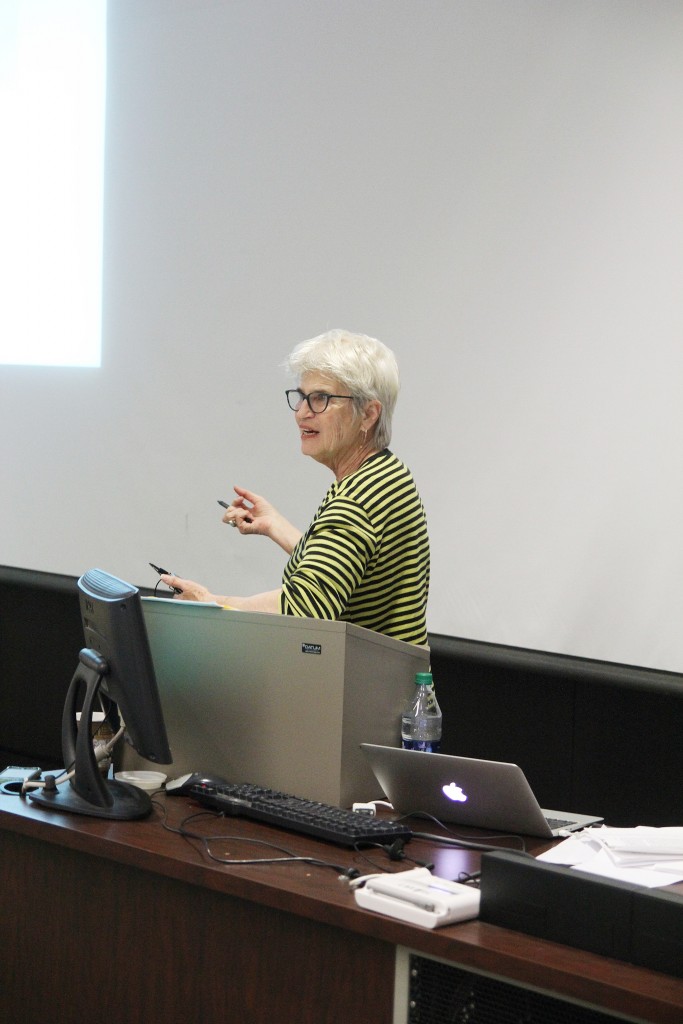
Violence can leave more than just physical marks. In her book “Adiós Niño: The Gangs of Guatemala City and the Politics of Death,” Deborah Levenson explored how a culture of violence affected the youth gangs of Guatemala City and shared her findings at Binghamton University on Friday.
Levenson, a history professor at Boston College, spoke about the city’s gangs and the politics of death as part of the Harpur College Dean’s Speaker Series in cultural competency. The event was hosted by the psychology department and co-sponsored by the history and Latin American and Caribbean Area Studies departments.
Levenson first began studying the gangs in the mid-1980s while abroad in Guatemala City. Largely due to high levels of political and economic inequality, a civil war had been raging there since the 1960s, which led to a rise in leftist insurgent groups. During the 1980s, the government began to target the Mayan people, whom they believed were supporting leftist guerrilla groups.
“The military defeated the guerrilla groups in the countryside and defeated the popular movement,” Levenson said. “And they did this through necropolitics, not through set battles. The military went and killed everyone through these horrendous tortures. They killed everyone in these villages and they used gratuitous violence, unnecessary violence in order to win.”
She explained that in 1986, the military, politicians and media started to print stories about a new type of violent youth gangs called “maras,” who they claimed were responsible for the violence. Levenson, along with two other colleagues, was working at a research institution in Guatemala at the time and decided to investigate.
“Three of us decided to debunk this,” she said. “We’re going to go out and find out about these gangs because we think this is a smoke screen for the military violence.”
During the 1980s, Levenson interviewed 30 young gang members, referred to in Spanish as “mareros.” She noted that these men, most of whom came of age in the 1970s, were not particularly violent and spoke of love, solidarity and social consciousness.
Levenson left Guatemala in 1988. However, when she returned over a decade later, she saw the streets filled with a very different type of gang — a violent one.
“My argument in many ways about why the gangs became so terrible, and the gangs are still the minority of youth in Guatemala, is that they learned a coexistence with violent death,” Levenson said. “They learned that excessive violence works. It really works.”
This new generation of gang members had grown up in the 1990s and had heard stories about death, loss and destruction from the war, which Levenson believes was a significant contributor to the increased violence exhibited by these gangs.
“Violence wasn’t just violence,” she said. “What they learned is that with violent death, they could control life. And learning to kill and killing, give death and take death, was a way of earning a living.”
From her interviews with the gang members in the late 1990s, she said she noticed despair in their stories. She noted the mareros would say that life was only about dying and killing.
According to Caitlin Field-Ruiz, a sophomore double-majoring in human development and Latin American and Caribbean Area studies, the lecture was a way to learn about other cultures.
“It showed that in order to understand why a person makes certain decisions or acts a certain way, we have to look into their past experiences, and maybe even into the past of their families,” she said. “What we see on the surface may not come close to the pain and trauma that they and their families have lived through and I think it is important for others to realize that.”


